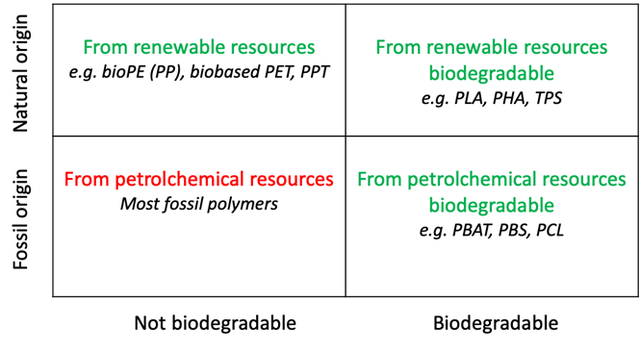NEW SUSTAINABILITY TRENDS
IN COSMETIC PACKAGING
SUSTAINABILITY

According to the institute for environmental protection and research, every year about 8 million tons of plastic end up in the sea, of which 7% in the waters of the Mediterranean. We hear more and more often about plastic islands, as one of the most worrying environmental disasters caused by the recklessness of humans. These are tens of thousands of tons of plastic floating on the surface of all the world's oceans. In particular, the most studied one is called The Great Pacific Garbage Patch, the plastic island located in the Pacific Ocean, whose extension ranges from approximately 700,000 km2 to more than 10 million km2 and would seem to include up to 100 million tons of debris. This incredible floating dump is not only showing no signs of shrinking, but according to the latest research, it is even expanding.
Due to the damage resulting from its accumulation on the planet, the word plastic is seen today with a negative meaning. However, the invention of plastic, which took place between the end of the nineteenth century and the beginning of the twentieth century, was a real revolution, and in the 1960s it established itself as a useful and irreplaceable tool in everyday life.
Plastic is a material that should not be demonized, but its use by humans must be improved: properly disposing of plastic is undoubtedly the first step towards a more sustainable future.
THE “PROBLEM” OF PLASTIC
Nowadays, there are also alternative polymers for making cosmetic packaging. While it is true that all plastics are polymers, it is equally true that not all polymers are plastics. It is therefore important to be aware of the opportunities that the world of polymer research can provide in the choice of sustainable materials to be applied in the creation of packaging.
To date, the polymers that can be involved for the creation of sustainable packaging range from recycled polymers to compostable biodegradable polymers, passing through biobased but non-biodegradable polymers.
WHICH ALTERNATIVES?
Recycled polymers include thermoplastic polymers such as PET, PE, PP obtained from mechanical or chemical recycling processes, which guarantee the recycled polymer mechanical, chemical and thermal performance like virgin polymers.
The advantage of these polymers is that it allows avoiding the consumption of other non-renewable polymeric material, thus ensuring an important reduction in CO2 consumption. For example, the use of post-consumer PET in the primary packaging sector is leading to a reduction of 300,000 tons CO2 eq/year.
Recycled polymers therefore represent a first alternative in the creation of sustainable cosmetic packaging. Examples are rPET and rHDPE polymers, where the letter "r" indicates that the material is recycled. However, these polymers compared to virgin polymers can present some critical issues, such as:
- The basic coloring which can sometimes hinder or make it difficult to sample coloring, especially in the case of transparent material.
- The aesthetic aspect.
- The not high availability and the not always regularity in the supply on the market.
However, from the point of view of environmental sustainability, the undoubted advantage of recycled polymers is to avoid the use of new virgin polymer to guarantee the non-depletion of non-renewable resources such as fossil polymers.
RECYCLED POLYMERS
Biodegradable and compostable polymers are polymeric materials that have intrinsic characteristics that allow them to transform at the end of their life cycle into compost, CO2 and H2O if subjected to precise conditions of temperature and humidity. To date, there are several biodegradable and compostable polymers that can be transformed to obtain primary packaging, such as PLA, PBS, PCL, PHA. Biodegradable and compostable polymers can be both biobased and fossil based, depending on whether the starting monomers are from renewable or non-renewable sources.
Unfortunately, biodegradable polymers can present serious problems in cases of primary cosmetic packaging, such as low-barrier properties or inconsistency of some physical-mechanical properties. Moreover, the polymer degradation process can be accelerated due to direct contact with the chemicals present in the cosmetic formulations and therefore cause problems with the material's resistance over time, potentially affecting the shelf life of the product.
BIODEGRADABLE AND COMPOSTABLE POLYMERS
Non-biodegradable biobased thermoplastic polymers can also be used to produce cosmetic packaging, such as biopolyolefins, biopolyesters, biopolyamides, which have performance characteristics completely like fossil-based polymers, but whose synthesis can be achieved with plant-based food feedstock (first generation biobased polymers such as polyethylene produced from cane bioethanol from sugar) or with plant-based non-food feedstock (second generation biobased polymers such as polypropylene and polyethylene produced from tall oil). These polymers are already introduced in the cosmetics sector and the demand and development of eco-packaging made with this type of polymers is fast-growing.
BIOBASED NON-BIODEGRADABLE POLYMERS
From all these examples we understand that the world of polymers that can be used for packaging is large and complex. The following table provided by the European Bioplastic Association is certainly helpful to untangle the various definitions of bioplastic, from which it is possible to deduce that there can be biodegradable and compostable polymers from fossil sources and that for a plastic being biobased does not necessarily mean be biodegradable and compostable.
THE TYPES OF BIOPLASTICS
Many cosmetic companies are looking for "eco-friendly" and innovative solutions and are active in introducing sustainable polymers in cosmetic packaging. The advantage that can emerge from the use of both biobased polymers and recycled polymers in the cosmetic packaging sector is clearly highlighted by the possibility of reducing, thanks to their use, the emission of climate-altering gases in the production of the packaging product, guaranteeing the ecological transition required to the cosmetic sector at the community level.
This transition can only be really implemented by aligning the various actors involved, which are: chemical companies producing polymers, companies producing packaging and companies using packaging. In fact, coordination work at all levels is necessary to guarantee the creation of a cosmetic packaging that, in addition to being sustainable, allows to efficiently guarantee the conservation and stability of the cosmetic product, as well as, not secondary, to be attractive to the final consumer. Sustainability therefore does not involve a single actor, for example those involved in the research and development of new materials, but the entire production chain must be aligned and participate in the creation of these new packaging.
THE IMPORTANCE OF THE SUPPLY CHAIN
MARCO SCATTO
UNIRED | Italy
Bio...
Marco Scatto is an Industrial Chemist, specialized in Polymer Science, with a particular experience in polymers dedicated to packaging. He is a consultant for UNIRED, a spin-off of the University of Padua that provides innovative and customized solutions for companies operating in the Health & Personal Care sector. In UNIRED he collaborates in research studies of innovative biobased and compostable packaging, supporting companies in their path towards sustainability.






